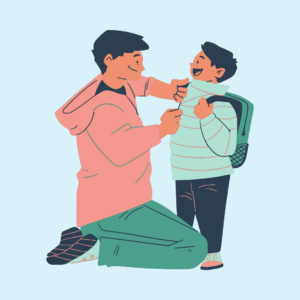Social emotional learning in academic instruction is having its moment. While counselors have been supporting the whole child and taking a deep look at noncognitive skills, the bandwagon has now officially been joined. If not, here are some ways to increase buy-in. What a great time to be a counselor! In my state, schools are required to use a set of school improvement indicators, several of which include social emotional learning. School counselors are also the leaders of our state’s guidance (insert cringe at the g-word) standards. The combination of these two means that all eyes are on counselors to lead the work in social emotional learning.
One part of social emotional learning is certainly direct, explicit instruction. This can be included in morning meetings, classroom counseling lessons, or schoolwide curricula. However, if we want to truly ensure that students are able to put social emotional learning skills into practice, we need to embed these skills in the academic curriculum.
Academic Alignment
What does academic alignment look like for social emotional learning? Looking at the CASEL Competencies, we are able to see a variety of skills that not only help students socially but academically as well. That is the beauty of these competencies – I dare any one to say that you can be successful in school without the ability to practice self-management, use perspective-taking, or to analyze problems. These are skills that are required in core academics.
Self-Reflection Exercise
When discussing social emotional learning with school staff, I ask them to consider a unit they are currently teaching. This can be a classroom teacher, the PE teacher, or a speech pathologist. Literally, any staff member in your school can do this activity – that’s the point! We all need to be implementing social emotional learning.
After choosing a unit, teachers should highlight all the social emotional learning competencies needed to successfully complete the unit. For example, a science unit would not only need a lot of the responsible decision-making skills but also impulse control for using materials, and probably relationship skills for group work.
After they have identified all of the needed skills, ask staff to check off the competencies that they actively teach. For example, does the science teacher teach students how to use the materials appropriately and practice waiting or other impulse control skills? The key here is explicitly teaching – it must be taught on purpose or it doesn’t count.
Ask teachers to look at the competencies that are left. These are the skills that they are assuming students already have. We can then incorporate problem-solving methods to determine which skills we need to teach more and which skills students typically have mastered. What do we do when students haven’t mastered a skill? How will we know? What will we do to support them?
Social Emotional Learning In Action
Let me share with you an example of this activity in action. I was working with a 3rd grade team. The team was halfway through a poetry unit with their third graders. It wasn’t going well. The students weren’t very interested in the work and the poetry that students were writing wasn’t meeting expectations.
After completing this activity, the team noticed that they had highlighted several of the competencies listed under self-awareness. While they were expecting students to identify emotions and to have accurate self-perception, they weren’t teaching these skills.
The team decided to stop their current plans and spend a few lessons building students’ understanding of emotions and self-perception. I gave them a few books that I thought might be helpful – I love Yesterday I Had the Blues. I also suggested they speak with their counselor (I don’t work at this school) to see if they could team up and align her lessons with this unit.
Intentional Planning
Never one to stop there, I suggested that the teams in this school add social emotional learning into their lesson plan template. The school uses a standard unit planning tool for their major units, I asked them if they could add a section that stated the social emotional learning competencies needed and how they would explicitly teach each one. They were game, I can’t wait to check back on how it’s going as this school year progresses.
How do you work with your school staff to align the work of social emotional learning in academic instruction? I have often asked teachers to show me their major units so I can align where it’s natural. For example, job sharing in social studies aligns nicely with cooperation. In my fifth grade, conversations around Jackie Robinson’s biography can fit well with social justice and anti-bias lessons.
Please comment with your best alignment tips, I would love to hear!
[su_divider top=”no” style=”double” divider_color=”#af1c1c” link_color=”#000000″ margin=”50″]








